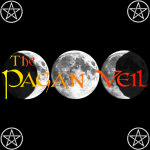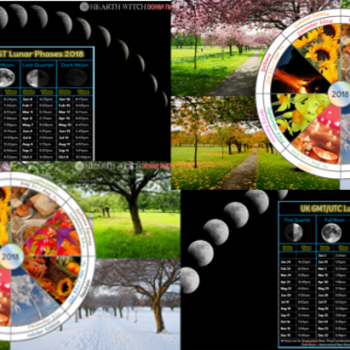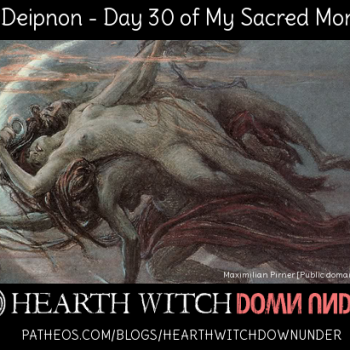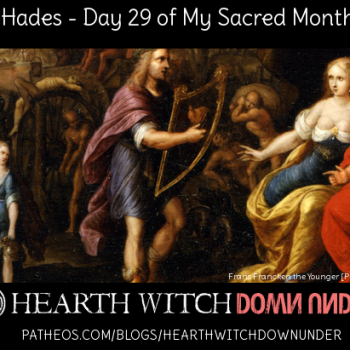180 Degrees of Separation is a series I am doing about the differences between the Northern and Southern Hemispheres in Paganism, Witchcraft and related areas. I am Australian and like every Aussie Pagan (not a generalisation), I notice that the large majority of 101 resources for Pagans are quite north-centric, which can be a bit of a problem for us in certain cases. There are of course many Aussie bloggers who are trying to share how these things are different and what it means – but in my opinion, the more of us doing this, the easier the knowledge is for others to find. So, the more the merrier!
These posts are not only for us in the south though – I am sharing information for both hemispheres, about both hemispheres. So people in the northern hemisphere will hopefully find value in these posts as well – keeping mind these are a bit 101 so if you’re an experienced Pagan, you probably already know most of what’s here anyway. But you might not know about all the hemisphere differences, so you may still find this series a worthwhile read.
In todays post we will be looking at the moon. In the South we see the moon from a different angle to those in the North. Because the English speaking world is rather North-centric, it is usually said that we here in the South see the moon upside down – because we are, in effect, upside down compared to those in the North, so we see the moon from the “bottom”.
This is only a matter of perspective. The moon is the same worldwide, we just see it differently. Each moon phase occurs at a particular time, and this time is the same world wide. So when the moon is full in the north, it is also full in the south. When the moon is waxing in the north, it is waxing in the south – however, the brightness of a waxing moon is on the right in the north, but on the left in the south.
The two pictures below will show the difference in our views, each picture shows new to waxing to full to waning to dark, from left to right. So the first moon shown in each picture is actually the exact same moon phase, at the same time, just seen from the two different angles.


The moon is an important part of many Pagan paths and traditions, though not all. If you have no interest in the moon, if it doesn’t mean anything to you, then you can ignore it as you wish and shouldn’t force it to be part of your path. If it does mean something to you then it will be up to you how you will incorporate it into your path. Many follow the phases of the moon, attributing certain correspondences to them. The phases used will be different from one path to the next, the correspondences will be different from one path to the next and the way each phase is used will be different from one path to the next. The most common you will find is the Triple Moon, which despite its name is often made of five phases; New, Waxing, Full, Waning and Dark.
New Moon
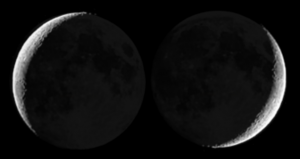
In astronomy the New Moon is when the moon is between the sun and the Earth, the suns light shines on the side of the moon facing away from us and as such the moon cannot be seen properly from the Earth. It is basically invisible.
In Paganism however the New Moon is generally just after this darkness, when the sun shines on a small piece of the moon which reflects back to us here and we can see a tiny sliver of the moon.
But which one do we use? When looking at a lunar calendar it will be up to the individual to decide which date they wish to apply to the new moon each month. Most lunar calendars will give the date of the new moon for when the moon is not visible to our eyes, so it may be best to wait a day or two after the astronomical new moon before doing any new moon rituals. If a lunar calendar says the new moon is on the 7th of August, you may wish to wait until the 8th or 9th of August for the “spiritual” version of the new moon.
Correspondences, the New Moon is a time of beginnings, a time of new growth. This is a great time to begin things that require growth, things that need time to come to fruition. Following the Triple Goddess, the New Moon is the phase of the Maiden.
Waxing Moon


In astronomy and Paganism, the waxing moon occurs between the New and Full Moon. Within Astronomy and some Pagan paths the waxing moon has several phases of its own, Waxing Crescent, First Quarter and Waxing Gibbous.
Correspondences, the Waxing Moon is the time of growth, the moon is increasing in power with each passing night. This a great time for construction, for strengthening already existing things, whether that be material objects, relationships, long-term spells and rituals, or even your business.
Full Moon
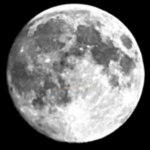
In astronomy and Paganism the Full Moon occurs when the earth is between the moon and sun. The sun is able to shine on the side of the moon that faces us and so we can see the entire “circle” shape brightly lit in our sky. The date here is the same for astronomy and Paganism, though of course different for each month. Most will attribute three days to the full moon, its actual date and the night before and after. Pagans and Witches may celebrate the Esbat on the full moon, which can be done with a group or coven or solitary.
Correspondences, the Full Moon is considered by some to be the most powerful of the lunar phases and any magic, spells or rituals performed will be amplified by this strength. Anything done of a psychic nature is best preformed during the full moon, so divination, dream work, prophecy. The moon is in its phase as the Mother Goddess, full of power.
Waning Moon


In astronomy and Paganism the Waning Moon happens in the long period between the Full and Dark Moons. It, like the Waxing Moon, will go through its own phases within astronomy and some Pagan traditions. Waning Gibbous, Last Quarter and Waning Crescent.
Correspondences, the Waning Moon is when the moons power is being drawn slowly inwards, making it the best time for banishment or letting go of things, whether physical or mental, losing weight or ridding yourself of addiction or bad health. Power of a negative nature is best done during this moon, that which destroys, weakens or lessens.
Dark Moon
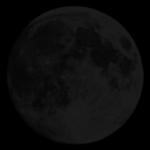
In astronomy there is no actual “dark moon”, though the moon is dark for a time each lunar month, in astronomy this dark period is called the New Moon.
In Paganism the Dark Moon occurs when the moon is between earth and sun, to find the dates for this moon just find the new moon on any astronomical lunar calendar.
Correspondences, the Dark Moon is a great time of bringing things to fruition, to an end. It is great for banishing and binding, ridding yourself of anything that needs to be gone. It is also a time for psychic work, much like the Waning Moon. It is a time of darkness, of loss and hidden things, including hidden power. Whilst many believe the Full Moon is the strongest of the phases, others believe the Dark Moon with its mystery and shadow is the more powerful. Following the Triple Goddess the Dark Moon is represented by the Crone aspect.


